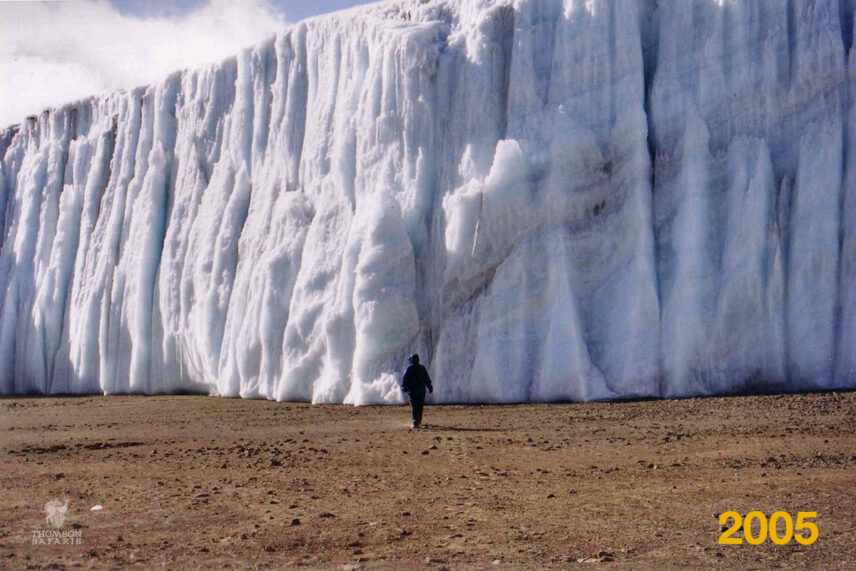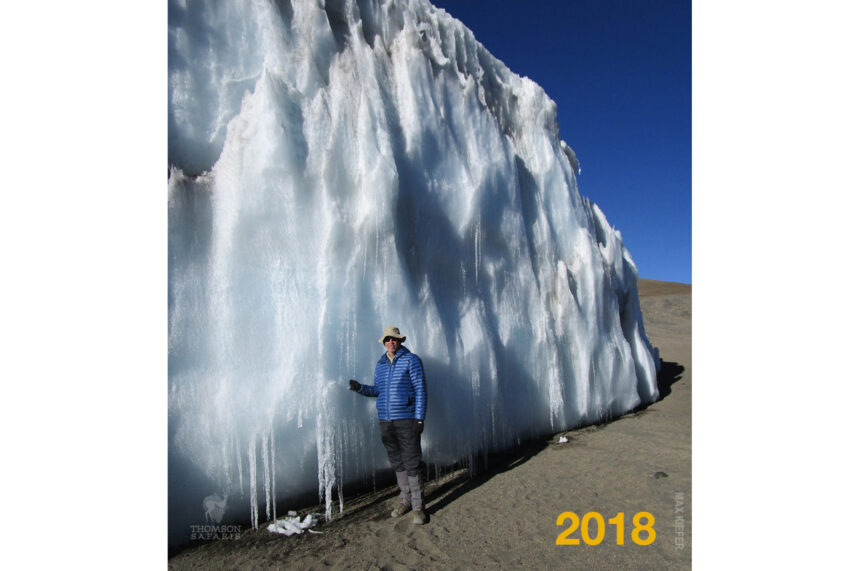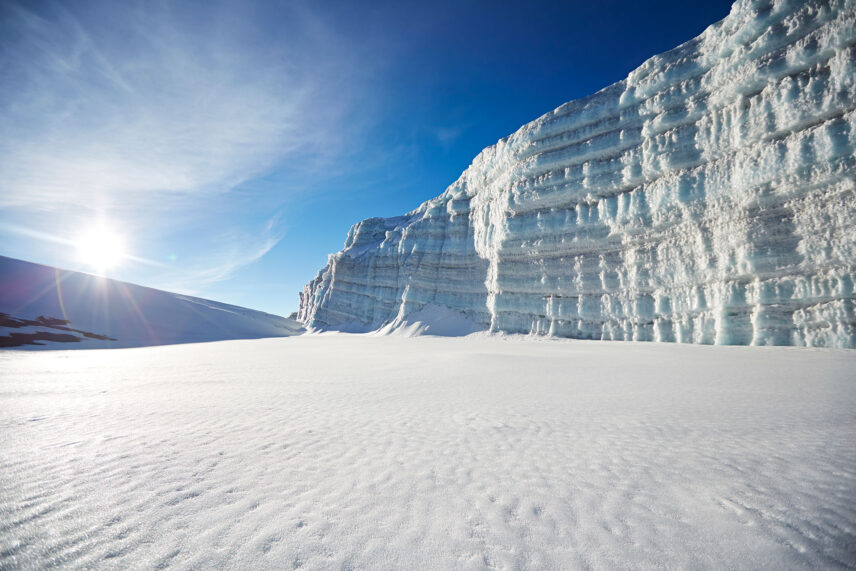Living or not, glaciers are being called an endangered species by members of the scientific community. Why? Because around the world fields of ice are retreating – many at unprecedented rates.
- Kilimanjaro’s glaciers are shrinking in surface area and becoming thinner.
- Glacier surface area shrank by 1 percent each year from 1912 to 1953.
- It shrank by 2.5 percent each year from 1989 to 2007.
- This means glaciers have reduced in area by 85 percent from 1912 to 2000.
- From 2000 to 2009, 26 percent of the remaining ice cover melted away.
- The glaciers survived a 300-year drought 4,200 years ago, and many researchers agree the recent melting is unique at least within the last 11,700 years
- At this rate, the glaciers could disappear completely within a matter of years.

Why Is This Important?
Kilimanjaro’s glaciers attract tourists from across the globe every year. They’re not just an incredible sight to see in Africa so close to the equator; they’re a treasured fixture of the landscape.
It’s hard to do the glaciers justice with words alone – so don’t take our word for it. See them yourself.



How Do We Save the Glaciers?
The sad truth is that Kilimanjaro’s glaciers have an expiration date. We’re simply not capable of reversing the melt. We can, however, try to slow the rate of melt by offering sustainable, green treks.
Recycling trash and fuel, using solar power and sourcing food locally is how we do our part to protect the glaciers every day.
